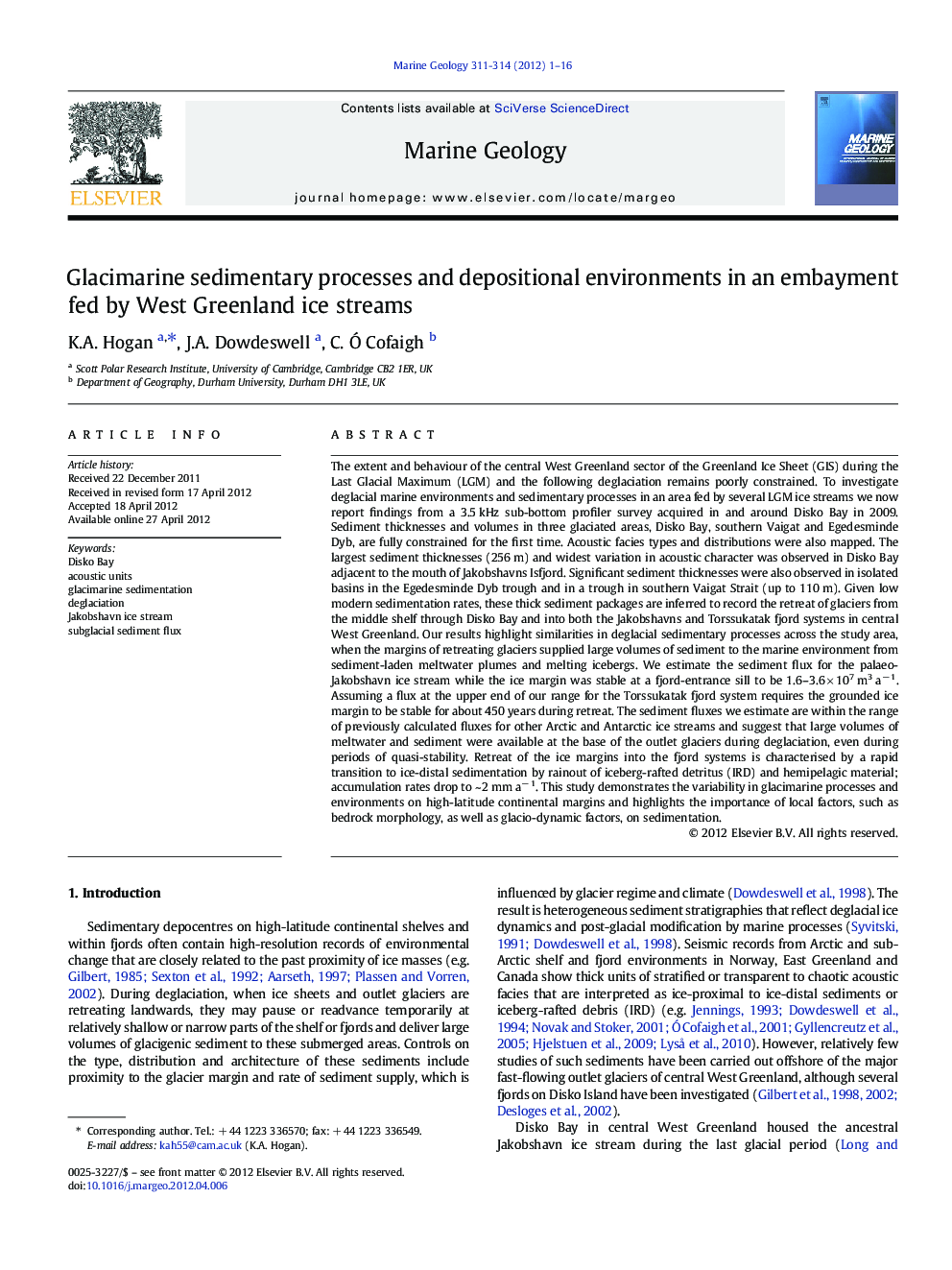| Article ID | Journal | Published Year | Pages | File Type |
|---|---|---|---|---|
| 4718550 | Marine Geology | 2012 | 16 Pages |
The extent and behaviour of the central West Greenland sector of the Greenland Ice Sheet (GIS) during the Last Glacial Maximum (LGM) and the following deglaciation remains poorly constrained. To investigate deglacial marine environments and sedimentary processes in an area fed by several LGM ice streams we now report findings from a 3.5 kHz sub-bottom profiler survey acquired in and around Disko Bay in 2009. Sediment thicknesses and volumes in three glaciated areas, Disko Bay, southern Vaigat and Egedesminde Dyb, are fully constrained for the first time. Acoustic facies types and distributions were also mapped. The largest sediment thicknesses (256 m) and widest variation in acoustic character was observed in Disko Bay adjacent to the mouth of Jakobshavns Isfjord. Significant sediment thicknesses were also observed in isolated basins in the Egedesminde Dyb trough and in a trough in southern Vaigat Strait (up to 110 m). Given low modern sedimentation rates, these thick sediment packages are inferred to record the retreat of glaciers from the middle shelf through Disko Bay and into both the Jakobshavns and Torssukatak fjord systems in central West Greenland. Our results highlight similarities in deglacial sedimentary processes across the study area, when the margins of retreating glaciers supplied large volumes of sediment to the marine environment from sediment-laden meltwater plumes and melting icebergs. We estimate the sediment flux for the palaeo-Jakobshavn ice stream while the ice margin was stable at a fjord-entrance sill to be 1.6–3.6 × 107 m3 a− 1. Assuming a flux at the upper end of our range for the Torssukatak fjord system requires the grounded ice margin to be stable for about 450 years during retreat. The sediment fluxes we estimate are within the range of previously calculated fluxes for other Arctic and Antarctic ice streams and suggest that large volumes of meltwater and sediment were available at the base of the outlet glaciers during deglaciation, even during periods of quasi-stability. Retreat of the ice margins into the fjord systems is characterised by a rapid transition to ice-distal sedimentation by rainout of iceberg-rafted detritus (IRD) and hemipelagic material; accumulation rates drop to ~ 2 mm a− 1. This study demonstrates the variability in glacimarine processes and environments on high-latitude continental margins and highlights the importance of local factors, such as bedrock morphology, as well as glacio-dynamic factors, on sedimentation.
► We examine high-resolution 3.5 kHz acoustic data from Disko Bay, West Greenland. ► We identify and compare glacimarine units deposited since the last glacial. ► Sediment volumes and subglacial sediment fluxes are quantified for the first time. ► Fluxes are higher than for other West Greenland fjords. ► Glacimarine deposition is affected by local factors such as bedrock morphology.
